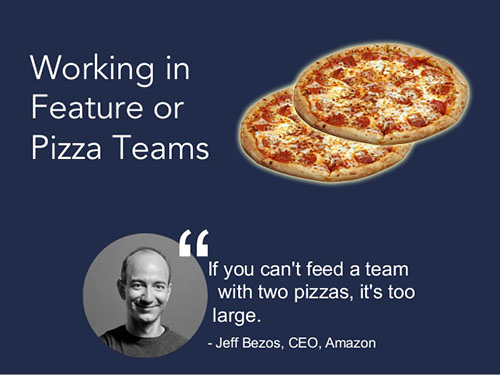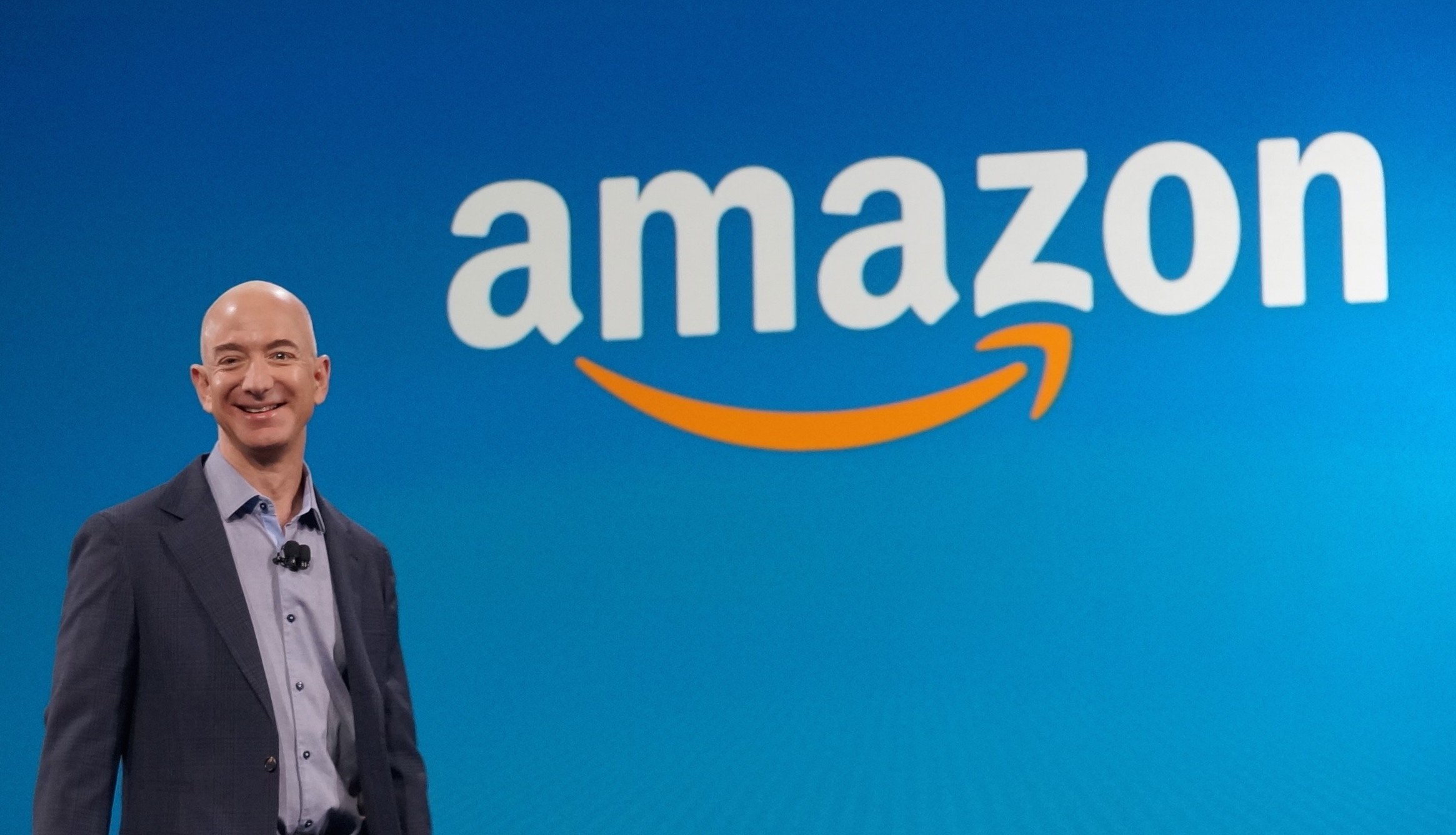(Updated 29 July 2017) Amazon Prime Now has just launched in Singapore, and is taking the local grocery delivery market by storm.
Demand has been so overwhelming that delivery was unavailable for quite some time. Industry pundits are now watching how the battle between Prime Now, Lazada’s LiveUp, HonestBee, and other players will turn up.
Founded by the legendary Jeff Bezos, Amazon.com is the world’s largest and most successful e-commerce company.
Also known as just Amazon, the leading e-commerce player generates a staggering US$107 billion in annual sales. Beginning as an online bookstore, it has since diversified into practically anything and everything which you can buy online.
Last year, Amazon overtook Wal-Mart as the most valuable retailer in the US by Market Capitalisation.
That’s not all.
Amazon is also the world’s largest provider of cloud infrastructure services. It hosts the websites of numerous online retailers – from Small Medium Enterprises (SMEs) to huge conglomerates like Sears, Marks and Spencer, and Target – and has recently expanded its business here in Singapore by opening a sprawling logistics hub.
What is the secret behind Amazon’s unprecedented success? How does it continually leave its competitors in the dust?
Amazon’s Innovation Flywheel
Thanks to an invitation from NTUC’s Future Leader Summit, I managed to learn a thing or two about Amazon’s success formula from Shane Owenby, Vice President APAC of Amazon Web Services (AWS).
The core of Amazon’s success lies in its corporate culture and DNA. This is exemplified by what it calls “The Flywheel”, borrowed from Jim Collins classic model in his book “Good to Great”.
As you can see from the diagram above, Amazon’s growth model hinges on its ability to provide low prices and wide selections to its customers. This enhances customer experience leading to improved web traffic, which in turn attracts more sellers to its platform.
To understand how the Flywheel is put into practice, Shane described two main precepts which form the Amazon approach to innovation:
- Amazon’s 14 Leadership Principles
- Amazon’s Innovation Formula
Let me go through each in turn.
“Want to increase innovation? Lower the cost of failure.” – Joi Ito, MIT Labs
Amazon’s 14 Leadership Principles
Considered to be more than just “pretty inspirational wall hanging”, Amazon’s 14 Leadership Principles underpin everything the online giant does.
They form the core of what Amazonians do every single day, from “discussing ideas for new projects, deciding on the best solution for a customer’s problem, or interviewing candidates.”
The principles are as follows:
- Customer Obsession
- Ownership
- Invent and Simplify
- Are Right, A Lot
- Learn and Be Curious
- Hire and Develop The Best
- Insist on the Highest Standards
- Think Big
- Bias for Action
- Frugality
- Earn Trust
- Dive Deep
- Have Backbone; Disagree and Commit
- Deliver Results
I will cover some of these principles in depth as we dive deep into Amazon’s innovation formula.
Amazon’s Innovation Formula
With a hat tip to economics, Amazon’s formula for innovation could be defined by the following equation:
(innovation) = f (org * arch)(mechanisms * culture)
According to Shane, innovation at Amazon could thus be understood as a function of the organisational structure multiplied by its architecture, to the power of its corporate mechanisms and corporate culture. Let us tackle each of these in turn.
#1 Culture
Amazon’s culture is enscribed by the 14 leadership principles highlighted above. Two of them were mentioned at the talk.
a) Customer Obsession
At Amazon, every process begins backwards from the customer. This is highlighted in the statement taken from Amazon’s website:
“Leaders start with the customer and work backwards. They work vigorously to earn and keep customer trust. Although leaders pay attention to competitors, they obsess over customers.”
b) Are Right, A Lot
“We like to say we are actively working on our next big failures.” – Andy Jassy, AWS CEO
The quote above exemplifies Amazon’s approach to leadership. While leaders should be right a lot and have “strong judgment and good instincts”, they should seek diverse opinions and work to disconfirm their beliefs. However, this must be supported with evidence.
As Shane himself highlighted, “At Amazon, we argue with data.”
#2 Mechanisms
Each new idea begins with a customer at Amazon. To bring this idea to life, legend has it that Jeff Bezos himself made it a practice to bring an empty chair into a meeting room. The empty chair would represent the customer, who is considered the most important “VIP” in the meeting.
Courtesy of cluckva1
This innovation process is captured by four processes in each new project:
- Draft press release to capture customer perspectives
- Frequently Asked Questions (FAQs) to answer any questions from the customer
- Start finding the right “primitives” ie metrics to measure success
- Launch, and then continue to test assumptions and iterate
Through this process, Amazon staff are able to understand the customer problems which they are trying to solve, and to evaluate if they are worth solving in the first place.
“95% of Amazon’s features come directly from our customers.” – Shane Owenby
Use of Narratives
As part of its decision making process, Amazon uses the power of storytelling and narratives. Through this process, Amazonians could write down their ideas and thoughts and achieve greater clarity while doing so.
(You can read more about how narratives could inform corporate storytelling here.)
#3 Organisation and Architecture
Amazon is intensely focused on what it does. It believes in creating tight single-threaded teams, also known as “2 pizza teams”.
The idea here is that any team which requires more than two pizzas to feed would be too large in size.
Courtesy of The Punk Rock MBA
There are several leadership principles at play here:
a) Frugality
According to Shane, he had to literally build his own desk at Amazon when he first arrived. Amazon’s head honcho Jeff Bezos believed that with constrained resources, staff are forced to think innovatively. Where possible, resources should be channeled only to change which matters to customers.
“Frugality: Accomplish more with less. Constraints breed resourcefulness, self-sufficiency and invention. There are no extra points for growing headcount, budget size or fixed expense.” (From Amazon’s Leadership Principles)
b) Bias for Action
Are you a cheetah or a sloth? Well, if you’re the latter, you can kiss your chances at Amazon good bye.
There is no room for analysis paralysis at Amazon. Every idea tossed up must be actionable.
c) Learn and Be Curious
Amazonians need to be able to recall something new which they have learned in the last 90 days. They need to be adaptable so that they can thrive on change. This ensures that they are always learning.
d) Hire and Develop the Best
As one of the world’s leading employers, Amazon has a brutal hiring process (called the Interview Loop) to ensure that they get the cream of the crop. This takes the form of the following process:
- Craft Job Description
- Conduct Pre-loop debrief (to ensure that all are in the know before the screening process)
- Make sure all are in sync before interviewing candidate
- Assign 2 Leadership Principles (LP) to Loop members (in the screening process)
- Calibrate LPs to interviewers on the Loop (each member must take interview training before they are qualified to conduct interviews)
- Blind voting and written feedback on candidate
- The Bar Raiser: acting as a “cultural police”, the bar raiser would facilitate the hiring process by ensuring that he upholds the rules during the interview process
- Conduct Debrief. During this process, members are allowed to change their vote once the team has accumulated their collective views
- Hire or No Hire decision.
The interview process can be so grueling that it may take up to eight hours of interview in a single day for a potential candidate!
Unlike other organisations, Amazon does not believe in hurrying their hires.
“A job will stay open forever until we find someone above the Bar.” – Shane Owenby
Spinning the Flywheel
Adopting the mantras “The only constant is change” and “It is still day one”, Amazon believes that the only way to succeed is to continually innovate.
Being static is not an option for the world’s largest Internet retailer. Thus, the behemoth of online buying believes that “you either cannibalise yourself or somebody else will cannibalise your business for you.”
Like any successful organisation, Amazon is extremely focused on its customers. The organisation does not waste time or resources on luxuries, and is singularly focused on building a corporate culture and DNA that is honed to deliver customer-centric perfection.
This zeal and intensity is probably the reason why the company continues to leapfrog over its competitors in the hyper-competitive retail and cloud marketplaces.
Amazon’s CEO Jeff Bezos (courtesy of Geek Wire)






Thanks for sharing these awesome insights! They share some CORE truths that align with my own work.
Some great thoughts here! I really appreciate the sharing 🙂
One small note (only a little OCD), your representation of the innovation formula is not quite written correctly. Specifically:
f (innovation) = (org * arch)(mechanisms * culture)
This says that there exists some function *of* innovation that equals the rest. That is, ‘innovation’ is an input to the function, and in fact the result does not depend on innovation at all.
What you should write is:
innovation = f( (org * arch)(mechanisms * culture) )
That says that innovation *is* a function of the rest. That is, that innovation is a result or output of some function, where the inputs are org, arch, mechanisms and culture in directly proportional and exponential relationships. Which aligns with what your saying in your text 🙂
Cheers.
Thank you so much Paul for that observation! Haha, yes it is a mathematical formula and what you told me makes more sense.